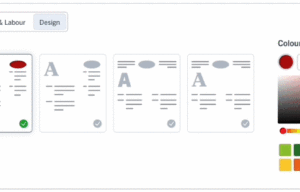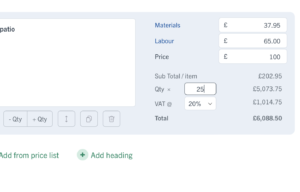If you’re a VAT-registered trades business, there’s a big change coming your way this Spring. On 1 March 2021, HMRC is bringing in the VAT domestic reverse charge for building and construction, and it’s set to change the way you charge and pay VAT.
Sounds kind of boring and complicated? Well yeah, it’s tax. But let’s break it down, make it simple and get you ready…
The reverse charge is a whopping great change to the way VAT is collected in the building and construction industry. It’s being brought in to reduce fraud and, as with any big change, it’s going to take a bit of getting used to. The good news is, we’re here to help.
Who does the VAT reverse charge affect?
The VAT reverse charge only affects VAT-registered tradespeople and businesses that report payments through the government’s Construction Industry Scheme, or CIS.
It applies to businesses that supply building and construction services, and businesses that buy those services – so subcontractors and the main contractors they work for. If you’re a VAT-registered builder and you subcontract part of a project to a VAT-registered plumber, plasterer, decorator, electrician or other trade, it applies to both of you.
It doesn’t apply to end users, like the people or businesses who’ll use the property that’s being built or worked on. It also doesn’t apply to what the government calls intermediary suppliers – people like procurement teams, landlords and property developers who aren’t actually providing any construction services themselves.
The reverse charge only kicks in if both the supplier and buyer are VAT and CIS registered, and unlike CIS it doesn’t just apply to labour, but also to any materials supplied along with it.
Not all construction services are included…
But we think most of the UK trades using YourTradebase will probably be subject to the VAT reverse charge. It applies to ground and prep work, the construction, alteration and repair of buildings, the installation of heat, light and power, and internal and external decorating. It doesn’t apply if you’re repairing building services like heat and power.
If you’re not sure which of those brackets you fall into, or you think you’re in more than one, it’s a good idea to give your accountant or bookkeeper a ring and talk it through.
What’s actually changing?
At the moment, if you’re VAT registered and you do some work for another trade business, you include VAT on your invoice, they pay it to you, and you pay it to HMRC when you do your VAT return. As the same suggests, the VAT reverse charge turns that around.
So, from 1 March 2021, when you write your invoice, you’ll still show how much VAT is due, but it’ll be payable directly to HMRC, instead of to you. The customer will pay you what they owe you, then they’ll pay the VAT straight to HMRC when they do their own VAT return.
What does that mean for trades businesses?
Well, if you’re VAT registered, you need to be aware of whether your construction customers and subcontractors are VAT and CIS registered too.
If they’re not, you’ll handle their invoices and related VAT payments exactly as you do now. No change, no worries. But if they are, you’ll need to apply the VAT reverse charge. That means showing the amount of VAT due on your invoices, and clearly stating that it’s due to HMRC, not to you, passing responsibility for paying it onto your customer.
Whether you’re a contractor or a subcontractor, it’s a good idea to keep clear records of any VAT reverse charge transactions, so you know what’s due and who’s paying it. The way you fill in your VAT return will be slightly different too and you can find out more about that here, or by talking to your accountant or bookkeeper.
Are the VAT rates or reclaim rules changing?
In short, no. But some tradespeople will find that because they’re charging less VAT, their cashflow takes a hit and their VAT returns are more about reclaiming money than paying it.
If that’s you, it might be a good time to switch to monthly VAT returns rather than waiting to do yours quarterly. It’s easy to do online or, again, through your accountant or bookkeeper.
When do the changes come in?
The VAT reverse charge comes in on 1 March 2021 and applies to all transactions where a VAT invoice is issued or a payment is made (whichever happens first) after that date.
How’s YourTradebase gearing up for all this?
We’re making some changes to the way our invoicing system works, so it’s quick and easy for you to work out and clearly display how much VAT is due. Our tech team’s still working on the finishing touches, but they’ll be going live in the next couple of weeks and when they do, we’ll send out an update to walk you through the changes.
What can I do in the meantime?
If you think the VAT reverse charge might affect you, pick up the phone and talk to your accountant or bookkeeper. They’ll be able to give you specific advice about your business and any prep you need to do.
Once you’ve done that, it’s a good idea to start asking the people you regularly work for, or with, whether they’re VAT registered. That way you’ll have a heads up on whether the way you invoice or pay them will need to change.
Finally, you can also find loads of information on the government website, including a practical webinar that talks you through the VAT reverse charge in a lot more detail.
We’re here to help, so keep your eyes peeled for our next update and we’ll make sure you’ve got this whole thing covered. Back soon!
Your quick VAT reverse charge checklist
- Talk to your accountant or bookkeeper before 1 March 2021
- Start asking your customers and suppliers if they’re VAT and CIS registered
- Create a new template for invoices where the VAT reverse charge applies
Finally, here’s an example provided by HMRC on reverse charge


